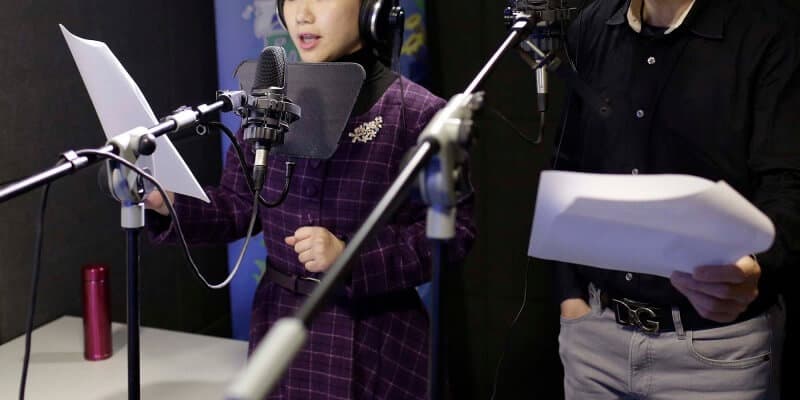
Dubbing is a process where audio and video content is translated from one language into another language while still maintaining the same context. There has to be a language pair in order for dubbing to take place. There is usually a source language which is the original language that content is, while the target language which is the language the content is being translated into. The same applies to voice translation. These both deal only with language pairs.
There are very many professionals’ cases where dubbing comes in play and can be used. If you are one of those people who think dubbing is only used in film production, then this article will change your mind. Dubbing is vast and applies in very many professional industries.
We will look at some different instances where dubbing comes in handy and how it possibly benefits them.
News broadcasts: Dubbing has really saved the industry of news broadcasts and it can be visibly seen in 2020. We have been battling a global pandemic that has affected every region in the world and the only way news is being shared across the board, is through dubbing and voice translations. This has made it possible for the world to liaise in trying to battle this pandemic. For the longest time, news broadcasting was only aimed at a specific target audience, and more often than not, it was to an audience that understood the original language used on the broadcasts. With time there was a need to broadcast to International audiences, as the world became a global village. People started being interested in what is happening in other regions and that is how dubbing became a sort after process in news broadcasting. A good example of how dubbing can be used in news broadcasting is if there is a multilingual severe weather warning that has to be broadcast to different regions. Dubbing and voice-over translations will play a big role in ensuring that translations cater to the different regions that might be affected.
Video games: Have you ever wondered how it is possible for people living in Africa to interact with either Chinese, French, or any other foreign language video games? I used to wonder about the same until I worked in a dubbing company and all the questions; I had regarding audio translations were answered. Dubbing has made it possible for video games to be easily accessible to different people in different regions. It doesn’t take a scientist to know that the minute one can understand and easily interact with any form of content then they can do it with no hassle regardless of how and where it was created. Dubbing allows for video games created in foreign languages to be converted into other different languages, to cater to an international audience. Every inch and pixel of screen space is valuable in video games, and dubbing comes in handy when characters and icons need to be clearly seen on screen. Video gaming is not a new thing and it won’t be going out of style soon. This is how I know that dubbing and voice translation will be a process that will continue being beneficial in the gaming community for a very long time to come.
Announcements and broadcasts: Any form of announcement and broadcast that is supposed to be relayed to the public, can be dubbed. The reason this is a thing is that it is easy, to automatically dub announcements into many languages, and be set in a way that they are relayed when needed. This is better illustrated in international airports. We are all aware that an airport has people who speak different languages and making announcements only in the English language, which means that other people won’t be able to get the information being relayed because they simply don’t understand it. This is why such announcements are dubbed, or voice translated in different languages and relayed to the different people who might benefit from it. Emergency broadcasts and announcements with critical information need to be dubbed for easier access by people who only understand foreign languages. Also, in gatherings where people have to follow programs or heed to safety precautions, dubbing and voice translation can be of great value because then there is inclusion for all audiences. Lack of dubbing and voice translations for announcements and broadcasts can lead to circumstances that could be avoidable. Business owners should cater to all the different people they host in their events and ensuring their safety should be number one on their to-do list.
Movies and television. Dubbing was exclusively introduced for movies and television and then it eventually found its way into all these other industries that we are talking about in this article. This is why every time you hear about dubbing; it is usually about film dubbing. For the longest time film producers, would produce films that could only be consumed by a local audience. They never thought they could go across the boards and affect a foreign audience. This could be expensive because then they would have to reproduce the films again using a foreign cast and it was never really an option. With time and the development of technology, the dubbing process was introduced. They found a way in which they could get translators to translate the original scripts into many other languages and have voice artists who spoke those languages to voice the scripts. The voiced scripts would then be mixed and mastered by sound engineers and the process was eventually referred to as dubbing. We have a lot of streaming platforms in this generation that offer a lot of dubbed films and television programs. This has made it easier for people to interact with movies and television programs from foreign countries easily. It is also a way of getting more income for production houses.
Cartoons: Another industry where dubbing is greatly used is in the cartoon production industry. Just like how dubbing is used for movies and television programs, is the same way it is used in cartoon production. International foreign cartoons are only made accessible to local audiences after they have been dubbed into these different local languages. Dubbing for cartoons is more critical and hard compared to dubbing for movies. The reason this is so is that in films you are dealing with real-life actors while in cartoons you are dealing with animations. Matching mouth movements is not as glaring of an issue as it is with material featuring live actors. A voice actor can express their individual talent, further localizing the video to its target language and culture and it’s not as easy for made up animations.
Voice-over is commonly used in TV advertising, as it’s useful for demonstrations and cases where there are no speaking roles. Dubbing or voice-over is used in video advertising, whether it is social media, YouTube, or on an interactive digital ad. Early 2019 we saw YouTube introducing subtitles on their videos and this is a move that has seen their platform grow in leaps and bounds. This is the same thing that happens when digital ad agencies and social media platforms take on dubbing as a form of localization. It is easy to localize your written content and have it make sense to an international audience but the only way to localize your video, audio content, opt for dubbing, or any other form of audio translation. Dubbing localization has a couple of aspects that need to be considered before the audio translations are done and these aspects are cultural, linguistical, and technical. The thing about dubbing for advertisements and promotions, the target audience need something that appeals to them and that is why making sure all these aspects are considered, is very important.
Training videos. Whether for students or professionals, instructional content must be treated with special care when dubbed for safety and accuracy. A professional translation agency skilled in dubbing and audio replacement is needed to make sure that important information is not wrong or lost. This is an area that has seen an explosion in the production of videos and video translation because of new software that facilitates the production of video in a cost-effective manner.
By now you can tell that dubbing and any voice translation a way to bring inclusion in audio/video content creation. Before dubbing was a thing, the only way that inclusion would be brought out was through captioning. This is a form of video translation that is presented in the form of texts at the side or bottom of a screen. Dubbing and voice translation has really come full circle in 2020 and it can only continue growing and being better.





